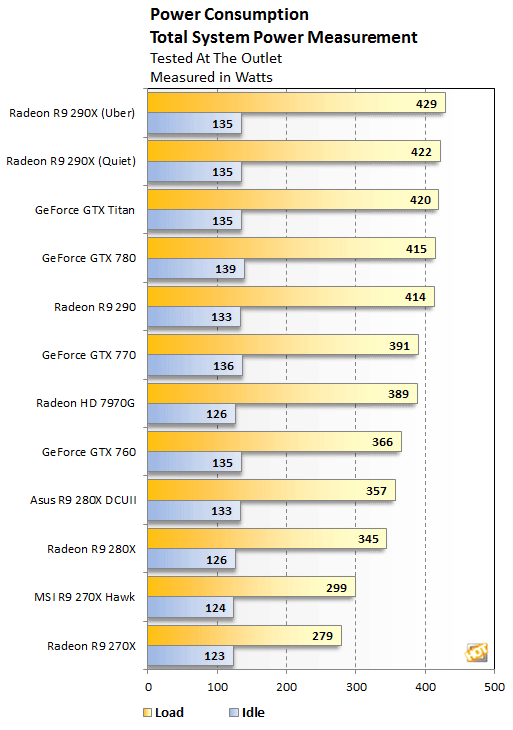AMD Radeon R9 290 Review: Hawaii Just Got Cheaper
Before bringing this article to a close, we'd like to cover a few final data points--namely, power consumption, temperatures, and noise. Throughout all of our benchmarking and testing, we monitored acoustics and tracked how much power our test system was consuming using a power meter. Our goal was to give you an idea of how much power each configuration used while idling and also while under a heavy workload. Please keep in mind that we were testing total system power consumption at the outlet here, not just the power being drawn by the graphics cards alone.
|
|
|

The Radeon R9 290's power consumption was right about in-line with the GeForce GTX 780 and a notch below the more-powerful Radeon R9 290X, under both idle and load conditions.
In terms of noise output, however, the Radeon R9 290 clearly produces more noise than a GeForce GTX 780 or Titan. As you've probably noticed by looking at the graphs throughout this review, the Radeon R9 290 does not offer "Quiet" and "Uber" modes like the R9 290X. Whereas AMD's more powerful variant offers two modes of operation, that set the peak fan speed at either 40% (Quiet) or 55% (Uber), the Radeon R9 290 offers only a single mode with a max fan speed of 47%. With its slightly pared down GPU and somewhat lower peak frequency, the Radeon R9 290's noise output is about on par with the 290X when in Quiet mode, but the 290 is noticeably quieter than the 290X when the latter is in Uber mode.
If noise is your primary concern, however, the GeForce GTX 780 is easily the quieter of the cards.






